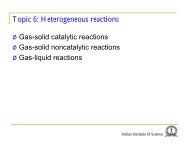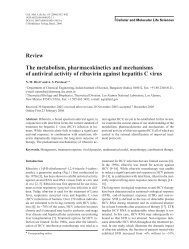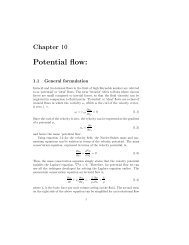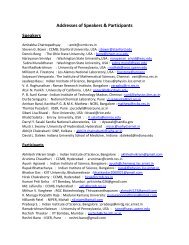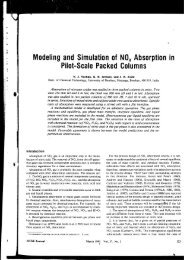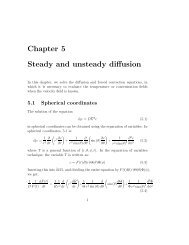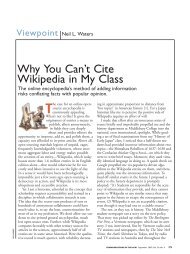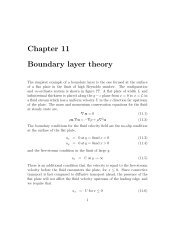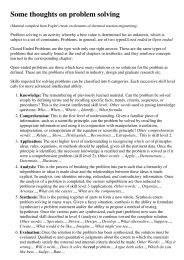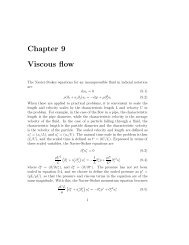Chapter 3 Unidirectional transport - Chemical Engineering ...
Chapter 3 Unidirectional transport - Chemical Engineering ...
Chapter 3 Unidirectional transport - Chemical Engineering ...
- No tags were found...
You also want an ePaper? Increase the reach of your titles
YUMPU automatically turns print PDFs into web optimized ePapers that Google loves.
3.3. EFFECT OF PRESSURE ON MOMENTUM TRANSPORT 35We can make use of one of the boundary conditions, that the stress is equalat the interface, to relate C (I) and C (II) .Atx = 0τ xz(I) = τ xz(II)C (I) = C (II) (3.140)Using Newton’s law of viscosity to relate the stress to the strain rate, we get( )(I) dv(I) z p0 − p Lµ = − x + C (I)dxL( )(II) dv(II) zp0 − p Lµ = − x + C (II) (3.141)dxLThis can be integrted to give( )v z (I) p0 − p L= −v (II)z = −2µ (I) L( )p0 − p L2µ (II) Lx 2 + C(I) x+ C (I)µ (I) 2x 2 + C(I) x+ C (II)µ (I) 2(3.142)There are three constants in the above equations, which are determined usingthe three available boundary conditions.Atx = 0Atx = −bAtx = bv z(I)v (I)= v (II)zz = 0v z (II) = 0 (3.143)These boundary conditions provide three relationships between the constantsC (I) , C (I)2 and C (II)2 .C (I)These can be solved to obtain2 = C (II)2( )p0 − p L0 = −2µ (I) L( )p0 − p L0 = −2µ (II) LC 1 = (p 0 − p L )b2LC (I)2 = (p 0 − p L )b 22µ (I) Lb 2 − C(I) b+ C (I)µ (I) 2b 2 + C(I) bµ (I) + C (I)2 (3.144)( µ (I) − µ (II) )µ (I) + µ (II)(µ (I) )2µ (I) + µ (II)(3.145)



